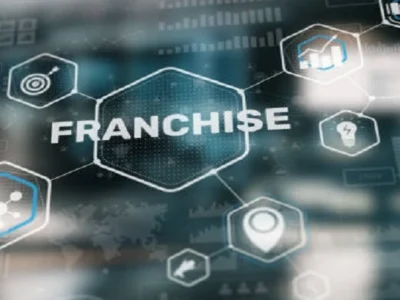Debt is a tricky thing to handle. Whether it’s student loans, credit card balances, or personal loans, it can feel overwhelming to know where to start when it comes to paying it all off. The good news is that with a little strategy and discipline, managing and ultimately paying off your debt is entirely achievable. The trick is knowing how to approach it effectively, and that’s what we’re going to focus on in this article.
One of the smartest ways to approach your debt is by tackling it strategically—prioritizing the debts that cost you the most money in interest. This method is called the “debt avalanche procedure.” Making the minimum payment on each debt and using all of your extra money to pay off the debt with the biggest interest rate is what you do. Once that’s paid off, you move to the next highest interest rate debt, and so on.
But before we dive into the specifics of this strategy, let’s consider one thing: if you’re a veteran and struggling with debt, you might be eligible for veteran grants for debt to help alleviate some of the burden. But, regardless of your situation, managing your debt properly can set you on the path to financial freedom.
Step 1: List Your Debts by Interest Rate
The first step in the debt avalanche method is to take stock of all your debts. Write them down and list them from the highest interest rate to the lowest. This list can include credit cards, loans, or any other debt you owe.
Why focus on the interest rate? The higher the interest rate, the more you are paying in interest over time, which means you’re going to want to tackle those debts first to stop the cycle of paying extra money on interest. Paying off high-interest debt first helps you save money in the long run, even though it might seem intimidating at first.
Here’s how you can organize it:
- Debt 1: $3,000 at 20% APR
- Debt 2: $5,000 at 12% APR
- Debt 3: $2,000 at 6% APR
Once you have your debts listed, you can move to the next step: making minimum payments and focusing your extra funds on the debt with the highest interest rate.
Step 2: Make Minimum Payments on All Debts Except the Highest Interest Rate Debt
Now that you have your list of debts, the next step is to make sure you’re keeping up with the minimum payments on each debt. Skipping a payment could damage your credit score and increase the amount you owe due to late fees and higher interest charges.
However, you want to put your extra money toward the debt with the highest interest rate. For example, if your first debt (at 20% interest) is your biggest concern, you’ll put every extra dollar toward paying that off as quickly as possible while continuing to make minimum payments on the other debts.
Here’s a breakdown of how this might look:
- Debt 1: Pay $100 minimum
- Debt 2: Pay $50 minimum
- Debt 3: Pay $25 minimum
- Extra money: Put it all toward Debt 1 until it’s paid off
This strategy allows you to reduce the amount of money you’re spending on interest, which can make a big difference over time. The key is being consistent and focusing on one debt at a time.
Step 3: Focus All Extra Money on the Debt With the Highest Interest Rate
This is the core of the debt avalanche method. Once you’ve made the minimum payments on all your other debts, take any extra money you have—whether it’s from cutting back on unnecessary expenses or a small windfall—and put it toward paying off the debt with the highest interest rate.
Let’s say you’re able to free up $200 extra each month. Instead of spreading that across all your debts, use it to pay down the debt with the highest interest rate. This method helps you pay off your high-interest debt faster, saving you money on interest over time.
For example, continuing with our earlier debt breakdown:
- Debt 1: You pay $300 this month (the minimum $100 + $200 extra)
- Debt 2 and Debt 3: Continue with the minimum payments
By doing this, you are actively reducing the debt that’s costing you the most money in the form of interest. Once Debt 1 is paid off, you move on to the next highest interest rate debt.
Step 4: Move to the Next Highest Interest Rate Debt
After paying off the loan with the highest interest rate, you can move on to the next one. Say you paid off the $3,000 loan with an interest rate of 20% pa. Once you have that extra $300 or whatever amount you’ve found, you will apply it to the next-highest-interest bill, which in this case is bill 2 at 12% APR.
Your payments will stay focused and strategic as you speed up the process of paying off each bill. After paying off Debt 2, you move on to Debt 3, which has the lowest interest rate, and make the circle complete.
Step 5: Celebrate Your Progress and Stay Committed
It can take a long time and be hard to pay off debt, but it’s important to enjoy your progress. Reward yourself for the hard work and dedication it took every time you pay off a bill. It’s easy to get angry at how long things take, but keep in mind that hard work and consistency will pay off in the end.
Don’t be afraid to ask for help if the process is getting hard for you. Someone who works with money or debt can help you through the process and keep you encouraged. The point is to gain speed, and little wins along the way will keep you going.
Alternatives to the Debt Avalanche Method
While the debt avalanche method is an effective strategy, it’s not the only approach. Some people prefer the debt snowball method, where you pay off the smallest debt first, regardless of interest rate. This can provide quick wins that keep you motivated. However, the debt avalanche method is generally more cost-effective because it saves you money on interest in the long run.
Ultimately, the method you choose depends on your personal preferences and goals. The key is to stay committed and focused on paying off your debts systematically, regardless of the method you choose.
Final Thoughts: Take Control of Your Debt
Managing your debt doesn’t have to be overwhelming. Following an organized plan, such as the debt avalanche method, can help you pay less in interest and get closer to being debt-free. If you want to pay off your credit cards, school loans, or personal loans, the most important thing is to stick to your goal, make regular payments, and focus on the debts with the highest interest rates.
Pedrovazpaulo Executive Coaching: Unlocking Potential with Its Power









Comments